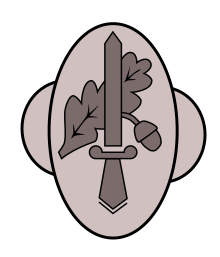
The Battle of Berlin, designated as the Berlin Strategic Offensive Operation by the Soviet Union, and also known as the Fall of Berlin, was one of the last major offensives of the European theatre of World War II.

The Battle of Moscow was a military campaign that consisted of two periods of strategically significant fighting on a 600 km (370 mi) sector of the Eastern Front during World War II, between October 1941 and January 1942. The Soviet defensive effort frustrated Hitler's attack on Moscow, the capital and largest city of the Soviet Union. Moscow was one of the primary military and political objectives for Axis forces in their invasion of the Soviet Union.

Felix Martin Julius Steiner was a German SS commander during the Nazi era. During World War II, he served in the Waffen-SS, the combat branch of the SS, and commanded several SS divisions and corps. He was awarded the Knight's Cross of the Iron Cross with Oak Leaves and Swords. Together with Paul Hausser, he contributed significantly to the development and transformation of the Waffen-SS into a combat force made up of volunteers and conscripts from both occupied and un-occupied lands.
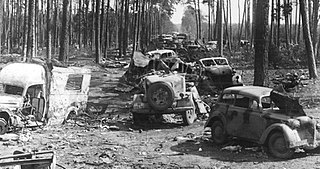
The Battle of Halbe was a battle lasting from April 24 – May 1, 1945 in which the German Ninth Army—under the command of General Theodor Busse—was destroyed as a fighting force by the Red Army during the Battle of Berlin.

Helmuth Otto Ludwig Weidling was a German general during the Second World War. He was the last commander of the Berlin Defence Area during the Battle of Berlin, led the defence of the city against Soviet forces and finally surrendered just before the end of World War II in Europe.

The 1st Belorussian Front, known without a numeral as the Belorussian Front between October 1943 and February 1944, was a major formation of the Red Army during World War II, being equivalent to a Western army group. Alongside the 1st Ukrainian Front, it was the largest and most powerful among all Soviet fronts, as their main effort was to capture Berlin, the capital of Nazi Germany.

The Battles of Rzhev were a series of Red Army offensives against the Wehrmacht between 8 January 1942 and 31 March 1943, on the Eastern Front of World War II. The battles took place in the northeast of Smolensk Oblast and the south of Tver Oblast, in and around the salient surrounding Rzhev. Due to the high losses suffered by the Red Army, the campaign became known by veterans and historians as the "Rzhev Meat Grinder".

The 11th SS Volunteer Panzergrenadier Division Nordland was a Waffen-SS division primarily raised with Germans and ethnic Germans from Romania, but also foreign volunteers from Western Europe. It saw action, as part of Army Group North, in the Independent State of Croatia and on the Eastern Front during World War II.

The Vistula–Oder offensive was a Red Army operation on the Eastern Front in the European theatre of World War II in January 1945. The army made a major advance into German-held territory, capturing Kraków, Warsaw and Poznań. The Red Army had built up their strength around a number of key bridgeheads, with two fronts commanded by Marshal Georgy Zhukov and Marshal Ivan Konev. Against them, the German Army Group A, led by Colonel-General Josef Harpe, was outnumbered five to one. Within days, German commandants evacuated the concentration camps, sending the prisoners on their death marches to the west, where ethnic Germans also started fleeing. In a little over two weeks, the Red Army had advanced 480 kilometres (300 mi) from the Vistula to the Oder, only 69 kilometres (43 mi) from Berlin, which was undefended. However, Zhukov called a halt, owing to continued German resistance on his northern flank (Pomerania), and the advance on Berlin had to be delayed until April.
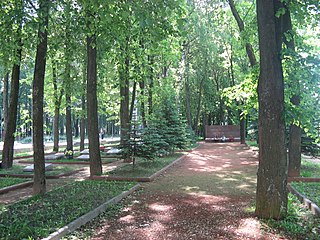
The Yelnya offensive was a military operation by the Soviet Army during the Battle of Smolensk during Operation Barbarossa, the German invasion of the Soviet Union, which began the German-Soviet War. The offensive was an attack against the semi-circular Yelnya salient which the German 4th Army had extended 50 kilometres (31 mi) south-east of Smolensk, forming a staging area for an offensive towards Vyazma and eventually Moscow. Under heavy pressure on its flanks, the German army (Heer) evacuated the salient by 8 September 1941, leaving behind a devastated and depopulated region. As the first reverse that the Heer suffered during Barbarossa and the first recapture of the Soviet territory by the Red Army, the battle was covered by Nazi and Soviet propaganda and served as a morale boost to the Soviet population.

The Battle of the Seelow Heights was part of the Berlin Strategic Offensive Operation. A pitched battle, it was one of the last assaults on large entrenched defensive positions of the Second World War. It was fought over three days, from 16–19 April 1945. Close to 1,000,000 Soviet soldiers of the 1st Belorussian Front, commanded by Marshal Georgy Zhukov, attacked the position known as the "Gates of Berlin". They were opposed by about 110,000 soldiers of the German 9th Army, commanded by General Theodor Busse, as part of the Army Group Vistula.

The 4th Panzer Army, operating as Panzer Group 4 from its formation on 15 February 1941 to 1 January 1942, was a German panzer formation during World War II. As a key armoured component of the Wehrmacht, the army took part in the crucial battles of the German-Soviet war of 1941–45, including Operation Barbarossa, the Battle of Moscow, the Battle of Stalingrad, the Battle of Kursk, and the 1943 Battle of Kiev.

The Battle of the Oder–Neisse is the German name for the initial (operational) phase of one of the last two strategic offensives conducted by the Red Army in the Campaign in Central Europe during World War II. Its initial breakthrough phase was fought over four days, from 16 April until 19 April 1945, within the larger context of the Battle of Berlin. The Soviet military planners divide the frontal and pincer phases of the operation, named Berlin Strategic Offensive Operation into:
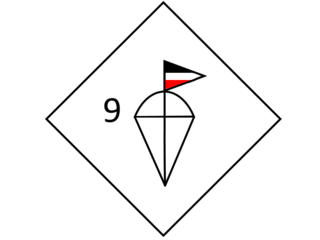
The 9th Parachute Division was one of the final parachute divisions to be raised by Nazi Germany during World War II. The division was destroyed during the Battle of Berlin in April 1945.
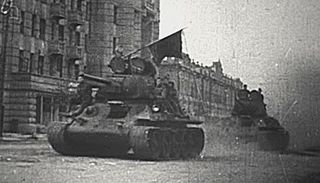
Operation Kutuzov was the first of the two counteroffensives launched by the Red Army as part of the Kursk Strategic Offensive Operation. It commenced on 12 July 1943, in the Central Russian Upland, against Army Group Center of the German Heer. The operation was named after General Mikhail Kutuzov, the Russian general credited with saving Russia from Napoleon during the French invasion of Russia in 1812. Operation Kutuzov was one of two large-scale Soviet operations launched as counteroffensives against Operation Citadel. The Operation began on 12 July and ended on 18 August 1943 with the capture of Orel and collapse of the Orel bulge.
The 3rd Panzer Army was a German armoured formation during World War II, formed from the 3rd Panzer Group on 1 January 1942.

The battle in Berlin was an end phase of the Battle of Berlin. While the Battle of Berlin encompassed the attack by three Soviet fronts to capture not only Berlin but the territory of Germany east of the River Elbe still under German control, the battle in Berlin details the fighting and German capitulation that took place within the city.
Army Detachment Steiner, also referred to as Army Group Steiner or Group Steiner, was a temporary military unit (Armeegruppe-type), mid-way in strength between a corps and an army, created on paper by Adolf Hitler on 21 April 1945 during the Battle of Berlin, and placed under the command of SS-Obergruppenführer Felix Steiner.
LVI Panzer Corps was a panzer corps in the German Army during World War II.
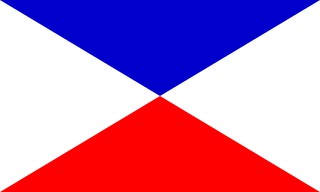
XXXXI Panzer Corps was a Panzer (armoured) corps in the German Army during World War II.
